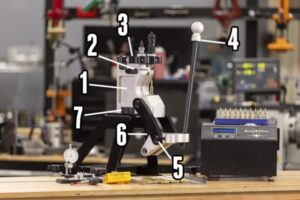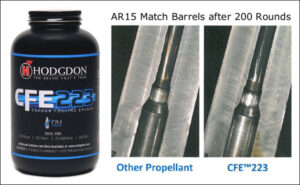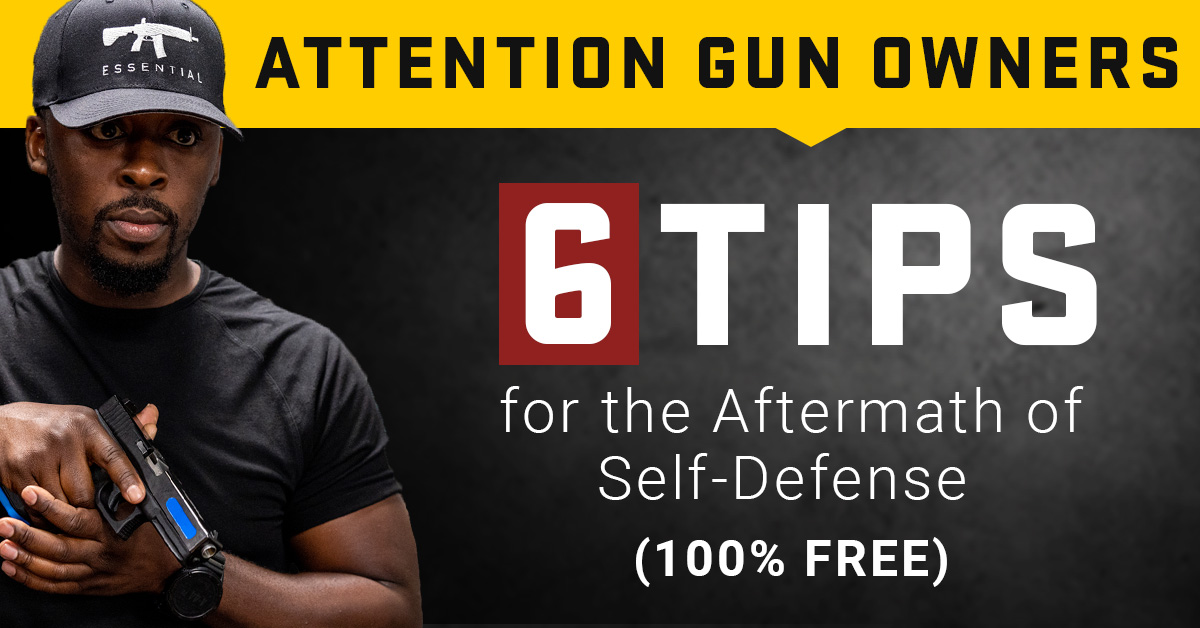Related Articles
This is part of a series of posts that highlight the gear the 200 top-ranked shooters in the Precision Rifle Series (PRS) are running in long-range rifle matches. (Learn about the Precision Rifle Series.) This group of competitors represents the best precision rifle shooters in the country.
This article is part of a mini-series where I’m sharing the reloading equipment and processes these guys use to load their match ammo. This group of shooters is especially interesting when it comes to reloading because of the level of precision required to compete. 66% of these top-ranked shooters reported that the muzzle velocity of their ammo had a standard deviation (SD) of 5 fps or less, which means they are only getting around 5 inches of vertical dispersion at 1000 yards! (What is SD?) 60% of this group said their average 5-shot group was 0.3 MOA or less! So these guys are handloading truly world-class ammo!
Here are links to the other articles in this series, which focused on the equipment and tools these guys use:
- Reloading Presses & Dies
- Reloading Powder Scales
- Reloading Process & Steps Performed (this article)
This article will break down the reloading process and steps that these pro shooters take when loading their match ammo.
I surveyed the top 200 ranked shooters in the PRS and asked which of the operations below they did EVERY TIME they did brass prep. Then I asked them which operations they did NOT DO EVERY TIME but did AT LEAST ONCE to a batch of their match brass.
- Clean/Tumble
- Anneal
- Trim
- Chamfer & Debur
- Full-Length Size
- Neck-Size Only (don’t touch shoulder or body)
- Run Neck Mandrel to set inside diameter of neck
- Turn Necks
- Clean Primer Pockets
- Uniform Primer Pockets
- Sort/Cull Brass by Weight
- Sort/Cull Brass by Volume
First, let’s look at the reloading steps that these top shooters say they do every time they are processing brass and doing brass prep:

You can see that around 70% or more of these shooters do these steps every time:
- Clean/tumble their brass
- Anneal
- Full-Length Size
- Chamfer & Debur
It might surprise people to see precision handloaders saying they full-length size their brass every time. In the Benchrest and F-Class world, it might be more common for shooters to only neck-size their brass. Neck-sizing means the die doesn’t touch the shoulder or body of the case at all.
Last year, I interviewed PRS Champion and two-time IPRF World Champion Austin Buschman, and he mentioned that he full-length resizes and bumps his case shoulder back 0.003” every time. “I shoot a lot of dusty, dirty matches in Oklahoma, and if you get a little bit of dust in your chamber and your brass isn’t sized quite a bit, you just can’t always close the chamber on it,” Buschman explained. When it comes to reloading ammo, his highest priority is reliability. Nothing will cause you to drop points faster than not being able to chamber a round. That is why 94% of these guys full-length size their brass every time.


Additionally, 58% of these shooters said they trim their brass every time. Many might expect these guys to trim cases to length every time, but some of them don’t do it every firing. In fact, Austin Buschman told me he only trims cases after the 6th or 7th firing!
Buschman: “I don’t trim cases as frequently as most people. In fact, I can sometimes do several reloadings and maybe even a whole season without trimming my cases. That is just another step I don’t want to have to do, so I usually don’t trim until I absolutely have to. I will sometimes measure a dozen or so resized cases and try to find the longest one, and then I’ll put that in my rifle and close the bolt. Then, I’ll run a borescope down the barrel from the muzzle end and look at how much of a gap I have between the end of the case and the chamber. If it’s not close, I know I can go another firing without trimming my brass. I typically need to trim after 7 firings or something like that. I usually start out each year with 1,000 pieces of new brass and a lot of times, I can make it through an entire season without trimming my brass, which saves me a lot of time. I usually shoot 6,000 to 7,000 rounds in a season, so if I start with 1,000 pieces of brass and can use it 6 or 7 times without trimming – then I didn’t ever have to do that step.”
Austin is not recommending that you assume that you can go 6 or 7 firings before you trim. He explicitly said, “I’d never recommend someone load cases that exceed the max case length.” You heard him explain that he is checking his case length in the chamber of his rifle. Austin’s dies have been set up so that he has minimal growth in terms of case length on each firing. Your rifle’s chamber, and your reloading dies/press are different than his. Check your length!
Important Info on Correct Case Length from Berger’s Reloading Manual: “Each time you fire a piece of brass and resize it, it grows in length. Eventually, the case becomes too long to fit in the chamber. When this happens, the end of the case neck has nowhere to go when you chamber a round, and it actually crimps into the bullet itself thereby creating an excessively tight seal. This situation can cause gas pressures to skyrocket to dangerous levels, and serious injury or death could result.“ – Bryan Litz, Berger Reloading Manual
I don’t want to overstate Buschman’s position as the “norm” for the rest of these shooters. 58% of these pro shooters said they trim cases to length every time, which is the majority. I’d suspect most other shooters trim cases every 2nd or 3rd firing. But Buschman’s process at least helps you understand why many shooters may not trim to length every time they process brass. (Read about Buschman’s complete reloading process.)
Then a little over half of them run a neck mandrel through it after sizing, which will set the inside diameter of their case neck. A neck mandrel helps ensure that the neck diameter and tension are consistent across all cases, which should help reduce variation in bullet release and minimize deviations in velocity. Full-length dies will size down the neck of the case by squeezing down the outside of the neck. That makes the outside diameter of the case consistent – but not necessarily the inside diameter. If the case neck wall thickness isn’t perfectly uniform between every case (and it rarely is), then the amount of neck tension from one case to another can vary. The question we are left asking is: Does it matter?
We have a large sample size of expert shooters, where roughly half ran their brass through a neck mandrel, and half didn’t – so we can actually gain some unique insight into that question! I asked each of these shooters what the standard deviation (SD) of their muzzle velocity was, which means we can analyze those numbers to see if those who used a neck mandrel every time ended up with lower SDs than those who didn’t.
And sure enough, there appears to be a difference! Here’s the data:

The 81 reloaders who used a neck mandrel every time had an average SD of 4.9, while the 94 reloaders who didn’t use a neck mandrel had an average SD of 6.0! While 1.1 fps might sound small, that is an 18% improvement!
Using a neck mandrel would theoretically provide a bigger benefit when brass neck thickness varied more from one piece to another, so I thought it would be interesting to see how much improvement you saw for different brands of brass. You can see those differences in the table above. Alpha showed the least improvement, which could point to it having the least variation in neck thickness, followed by Lapua, then Peterson, then Hornady. Now, we are inferring a lot there, but it is at least an interesting trend in the data. It is also interesting to see that a neck mandrel lowered the variation you saw in muzzle velocity for every brand.
Now we come back to the question: But does it matter? Ha! Does a 1.1 fps improvement in muzzle velocity SD mean you should add one more step to your brass prep? Well, that comes down to an individual decision and how much you value your time! We’ve taken the data as far as it can to give us insight into the level of improvement we might expect, and now it’s left to us to decide.
Another insight from the original chart above was that 15% of these shooters clean their primer pockets every time. Honestly, I was a little surprised to see that percentage as high as it was, so it was worth noting.
Now let’s look at what this group of elite marksmen said they don’t do every time but do at least once per batch of brass. To be clear, I didn’t ask how often they do these operations. It was simply framed as, “What operations do you NOT do every time but do at least once per batch of brass?” So they may do some of these things only once per batch, or they might do it as frequently as every other time.
Here are the results:

You can see that many of these people only anneal, trim, or chamfer and debur occasionally.
In fact, there were at least a few shooters who said they did each of the operations I had listed at least once on a batch of brass. That included turning necks, uniforming primer pockets, and sorting/culling brass by both weight and volume. However, those things were only done by a small minority of these shooters.
However, none of these “at least once” steps were represented by the majority of these top shooters. All of the percentages were well below 50%, which is an interesting note. I believe that means that the majority of these shooters do the same reloading process and steps in their brass prep every time they reload.
I was curious if the guys at the very pinnacle of the PRS might have a slightly different reloading process. In 2024, there were 41 regular season PRS Pro Series matches (those are the national-level, two-day PRS matches), and the winner of 51% of those was decided by 2 points or less! In fact, 39% were determined by 1 point or less! 7 were ties that had to go the time on the skills stage as the tiebreaker to determine the match winner!
So, for those guys at the very top, finding a way to get 1 more impact could literally be the difference between a win or a loss! Does that mean they do a few extra things in their reloading process to gain even a slight competitive advantage?
Well, let’s look! The data below is identical to what I presented above, except I added the orange bars for comparison, which represent the percentage of shooters in the top 25 who said they did each step. This first chart is related to the reloading steps they said they performed every time they did brass prep.

Very interesting! It’s not that the shooters at the very top do more steps in their reloading process – they actually do slightly less across the board! It is precisely the opposite of what many people might expect!
In fact, look at trimming: 58% of the top 200 shooters said they trimmed every time, but only 44% of the top 25 said they trim every time.
Look at the neck mandrel! 54% of the top 200 said they used a neck mandrel, but only 44% of the top 25 said they run their brass through a neck mandrel! It’s that interesting?!
While that isn’t a huge difference, it really is across the board. Could it be that the guys at the very pinnacle of the PRS have been doing it long enough to know those OCD steps in the reloading process don’t actually add to your score?
But, maybe the top 25 don’t do some of the steps every time – but their percentage of steps they do occasionally has to go up, right? Well, here is that chart:

Not really! While there are slight differences, for the most part, the top 25 simply do fewer steps than the rest of the guys.
Last year, I also interviewed two-time PRS Champion Austin Orgain and asked about his reloading process. You can read his complete process at that link, but at one point, I asked Orgain, “So you don’t run your cases through a neck mandrel to set your case’s inside neck diameter?” He said, “Nope. I don’t run a mandrel at all. … I don’t know that it really matters, and for me, it seems like it’s probably past the point of diminishing returns and not even worth doing. To me, it’s definitely not worth doing if you have to add a whole additional step to your loading process to run your cases through mandrel. If you had a Dillon progressive loading setup where you could just add a mandrel die into your rotation, and it wouldn’t require a bunch of extra time or effort – maybe. But I’m not going to run all my brass through a mandrel if I’m doing it on a single-stage press.”

Next, I asked Orgain: “Do you ever neck turn your brass, uniform your primer pockets, or clean your primer pockets?” I remember Austin laughing, and then he said, “If I had to neck turn my brass, I’d quit! No, I don’t ever do any of that stuff!”
Now, that might sound flippant or like these guys simply aren’t precision reloaders. But, if you are thinking that, I know that you’ve never seen Austin Orgain shoot. It’s unbelievable what that guy can do with a rifle!
Remember, 66% of these top-ranked shooters reported that their ammo had an SD of 5 fps or less, which means they are only getting around 5 inches of vertical dispersion at 1000 yards! 60% said their average 5-shot group was 0.3 MOA or less! So, the majority of these guys are producing truly world-class ammo!
Austin Orgain and Austin Buschman have combined to win 3 golden bullets, which is the trophy awarded to the PRS shooter with the highest overall score at the end of the season. It may shock a few people to hear those two and the other top 25 do fewer reloading steps than other shooters, but maybe that is because many of them have literally fired 50,000+ rounds and have figured out some of those things are “past the point of diminishing returns and not even worth doing,” as Orgain explained.
I hope this helps you shooters who are trying to figure out what matters when reloading ammo for long-range shooting and what doesn’t! Maybe we should all spend a little less time at the reloading bench and a little more time behind the rifle! 😉
I can’t wrap up this article without mentioning that most of these guys are using brass from one of the premium manufacturers like Alpha and Lapua – and they are using brass that is all from the same lot. Many of the ones that I know in this group buy 1,000 pieces of brass from the same lot. If they weren’t using premium brass from the same lot, then they wouldn’t be able to achieve ammo that performs as well as theirs does – even if they added more steps into their reloading process.
That was something that took me years to learn. If you don’t start with high-quality brass, you’ll never add enough steps into your reloading process to make it into uniform, high-quality brass. When it comes to loading world-class ammo, much of it comes down to brass quality. My advice is to not cut corners on brass.
I’ll share a more detailed breakdown of the exact brands of brass these guys are using in an upcoming article and even give a breakdown of what brand they picked based on what cartridge they are running.
If you enjoyed this content, I’ve already pushed dozens of articles just like it! Check out the other “What The Pros Use” articles that have already been published this year.
Be the first to know when the next What The Pros Use article is published by signing up for email alerts.
If you’d like to help PRB, here are ways you could do that:
No pressure – but it does cost quite a bit to support the amount of traffic PRB gets, and I spend quite a bit of time creating all this content. If you get value from the content and would like to donate, I promise 100% of it will go towards keeping this thing going!
It would help me out if you’d share a link to this article on Facebook and your favorite rifle forums so more people can benefit from the content.
© Copyright 2024 PrecisionRifleBlog.com, All Rights Reserved.

















